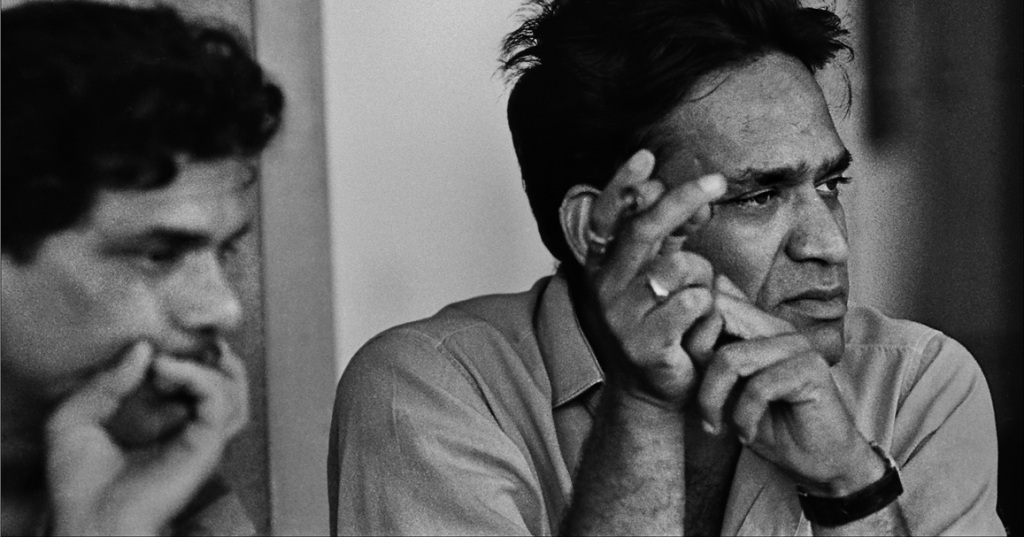There is a search for the unknown which, I think, has always found expression in my works.
– Jeram Patel
A few weeks ago, I came across a painting that stood out amidst a gallery exhibiting Indian modernist paintings. This work drew my attention as it swapped a regular canvas with a wooden board. The undecipherable surface consisted of hammered nails, discreet hole patterns, and burnt wood. Its ingenuity was remarkable, its rawness contagious. The untitled work bore a caption with the artist’s name – Jeram Patel.
One of the most significant Indian artists of the post-independent period, he was born in 1930 in Sojitra, Gujarat. He studied at the JJ School of Art, Mumbai and delved into Typography and Publicity Design at the Central School of Art and Crafts, London. Eventually, he taught at MS University, Baroda. In 1962, he worked as a graphic design consultant at the National Institute of Design, Ahmedabad. Over his long career, he represented India in various international art festivals – the Tokyo Biennale (1963), the Sao Paulo Biennale (1963) and the Third World Biennale, Baghdad (1980). His solo shows in London, Kolkata, New Delhi, and Mumbai were quite popular. He received Lalit Kala Akademi’s National Award in 1957, 1963, 1973, and 1984. He won the National Award for Design in 1976. In August 2016, the Kiran Nadar Museum of Art, New Delhi exhibited his works in a solo retrospective show, as part of their ongoing series on abstractionism and minimalism in Indian modern art.
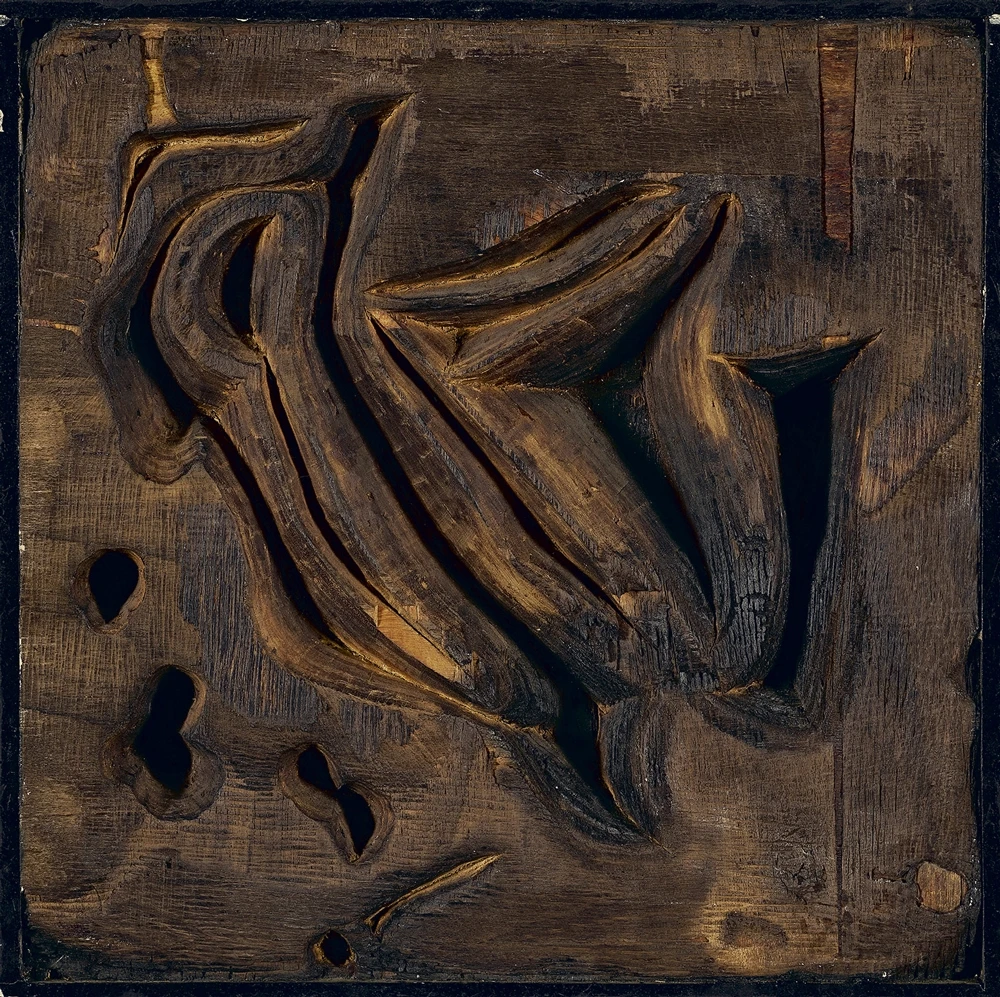
Renowned for his cryptic yet striking works (and if one may also add his personality), Jeram Patel was a sensation in the Indian art circle in the latter half of the 20th century. In the 1960s, when Indian artists were experimenting with form, Patel pursued a new kind of medium in abstraction – one that involved engraving on burnt wood that he set alight with a blowtorch. In the 1950s, Japanese artists used unconventional materials to exaggerate their art. His visit to Japan informed this new technique.
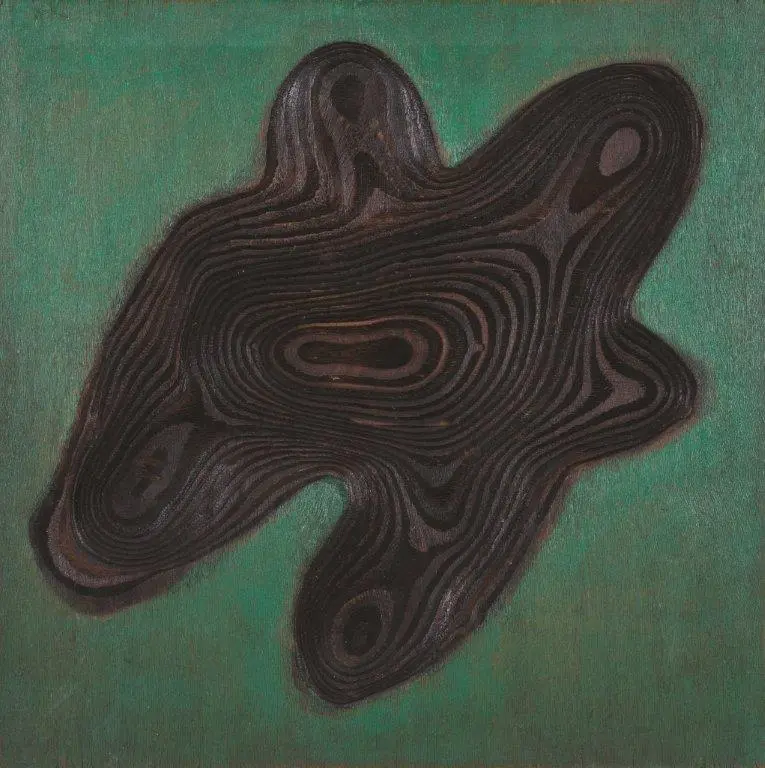
By the early 1960s, he had astonished his close friend, Gulam Mohammed Sheikh with this process. For Sheikh, Patel “literally painted with a flame” and that too without any heed to the sultry heat of Ahmedabad. “[He] worked with some kind of energy which I could not understand,” admits Sheikh who along with Patel was part of the ‘Group 1890’ formed in 1962. The Group held its first and only exhibition in 1963 at Lalit Kala Akademi, New Delhi. The then Prime Minister Jawaharlal Nehru inaugurated the show. In the exhibition catalogue, an introductory article by Octavio Paz described the group heralding a movement “which affirms itself as a will of change and, at the same time refuses to define the sense or the direction of such change.” This deliberate absence of ideological meaning in the group’s work made it a historically significant moment in Indian art history that departed from the Progressives in Bombay and the Bengal School.
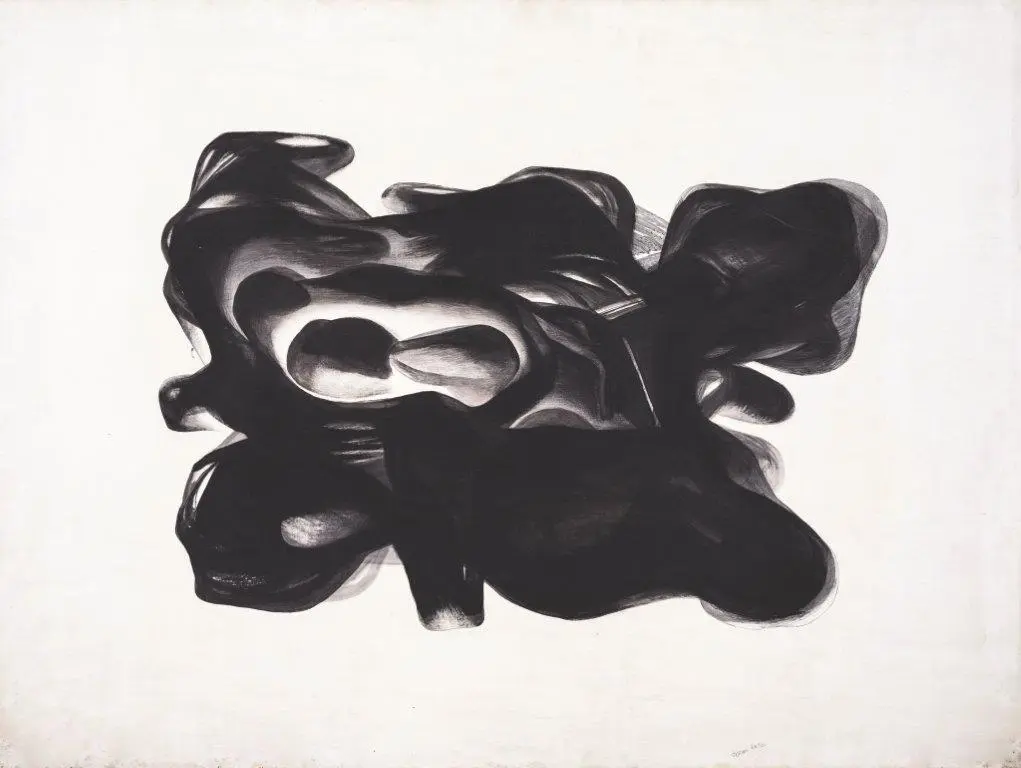
Patel’s other strand of artwork employs a different set of tools like the crow quill or a brush with Chinese ink to create magnificent forms that, often, are incomprehensible. What do you imagine when looking at his paintings? This image or even his works on wood do not represent a particular reality or create a thematic context, making it hard to analyze them. Critic Prayag Shukla notes, “If a form or image resembles an animal, or with archaeological excavation or an image of a tool or some used objects scattered on the ground; one cannot possibly cling to it only, as each image is capable of multiple refractions and not just one-thus in rejection or cancellation of the resemblances that may occur in our mind or perception, lies the true substance of Jeram Bhai’s works: in the very process of this sort of cancellation one goes through myriad experiences and in the explorative act finally reaches to a certain realisation: a bodh.”
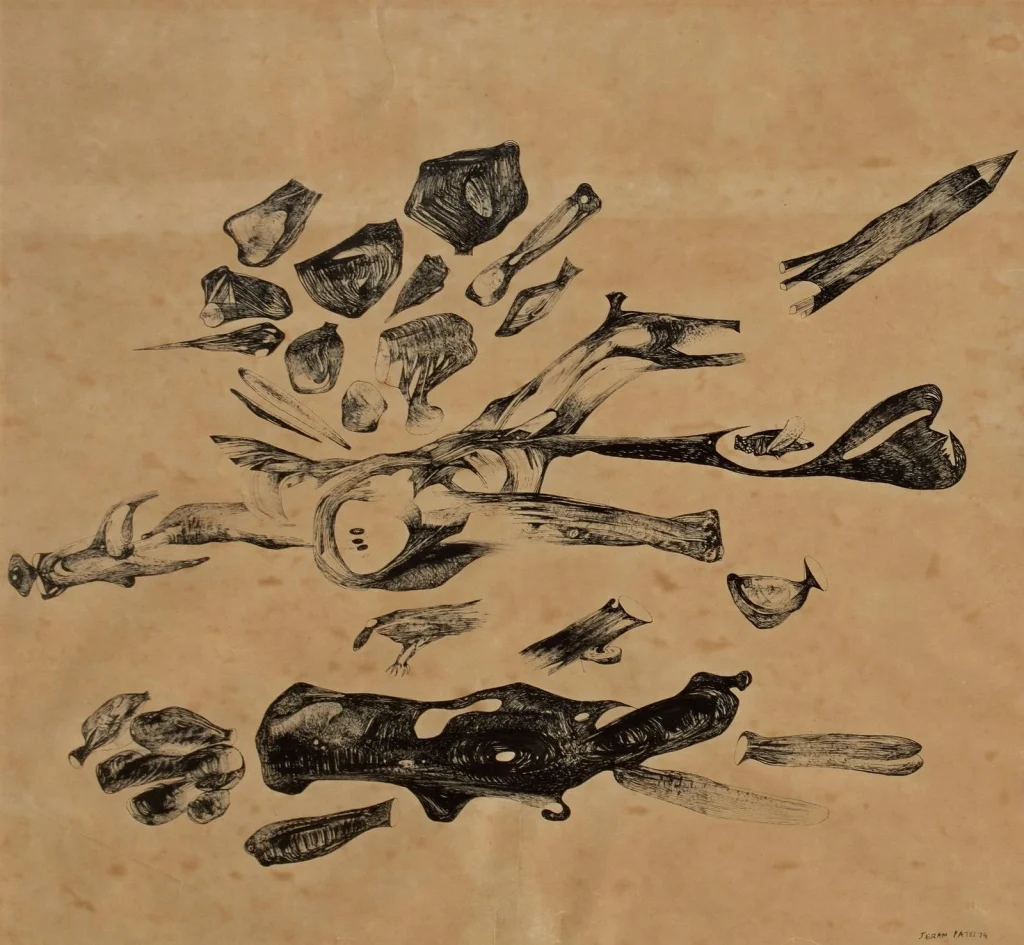
It does not mean that Patel’s images are entirely free from context. Critics like Geeta Kapur and Richard Bartholomew find in Patel’s work an undecipherable rage which disturbs the viewer. One might argue that this rage relates to the immense violence of the post-independent period. Perhaps it draws strength from something more innate within him that also constituted his estrangement from others. The viewer and the critic stand helpless – what is it that Jeram reveals to us that is so absurd and yet so close to us?
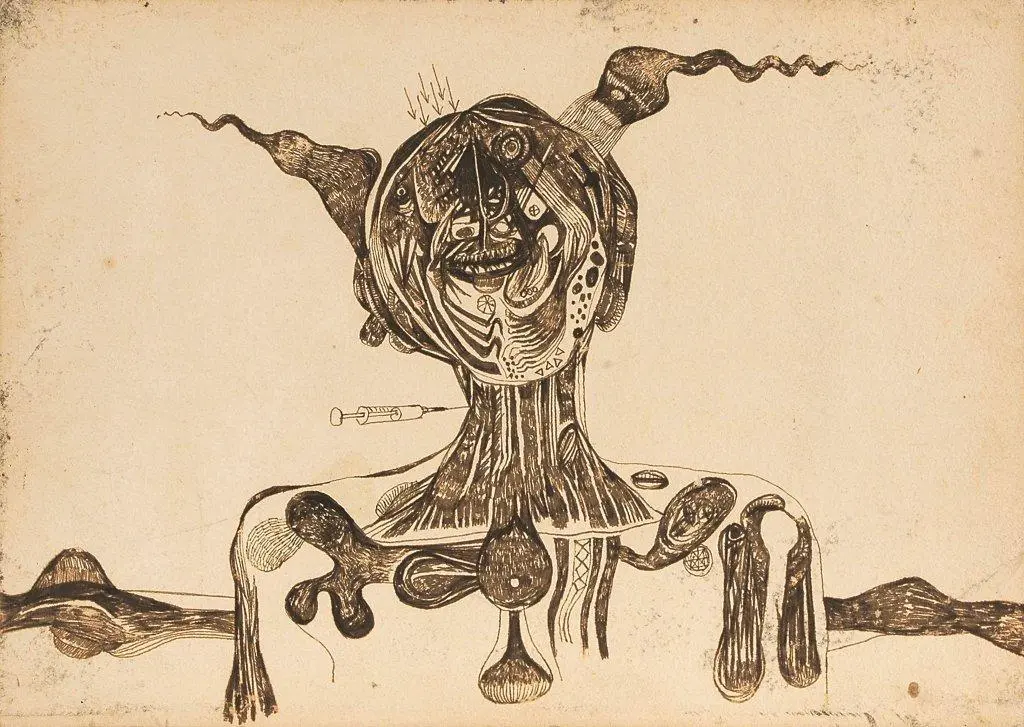
However, his ‘Hospital Series’ stands apart by incorporating a figurative element absent in most of his oeuvre. The paintings’ inspiration came when illness occupied him with the idea of death and the body’s vulnerability. The disfigured human is amidst medical and surgical devices that invoke pain and healing. The works attempt to display a bodily interiority that verges on the macabre.
Jeram Patel, his exceptional ingenuity, and skilful handling of the infernal brush have revealed not only hitherto unexplored territories of artistic expression but also realms of thought that were too intimate to be encountered. Patel, often described as a “lone wolf,” died in 2016. In his obituary, Gulam Mohammed Sheikh labelled him as a “reticent man, tormented, burning with an inner fire and almost always tense, sometimes to the point of being aggressive.” The torment and inner fire of the infernal artist continues to bewilder and scar his viewers.
References
- https://aaa.org.hk/en/collections/search/archive/geeta-kapur-and-vivan-sundaram-archive-exhibition-catalogues-from-geeta-and-vivans-collection/object/group-1890-191155
- https://criticalcollective.in/ArtistInner2.aspx?Aid=161&Eid=1033
- https://indianculture.gov.in/paintings/other-portfolio/jeram-patel
- https://www.knma.in/artist/jeram-patel
- https://www.hindustantimes.com/art-and-culture/the-first-ever-retrospective-on-jeram-patel-shows-the-dark-beauty-of-his-works/story-3SG164qdKjbbzLNSn5CImM.html
Revisiting the Legacy of the Progressive Art Movement and the Modern Indian Art
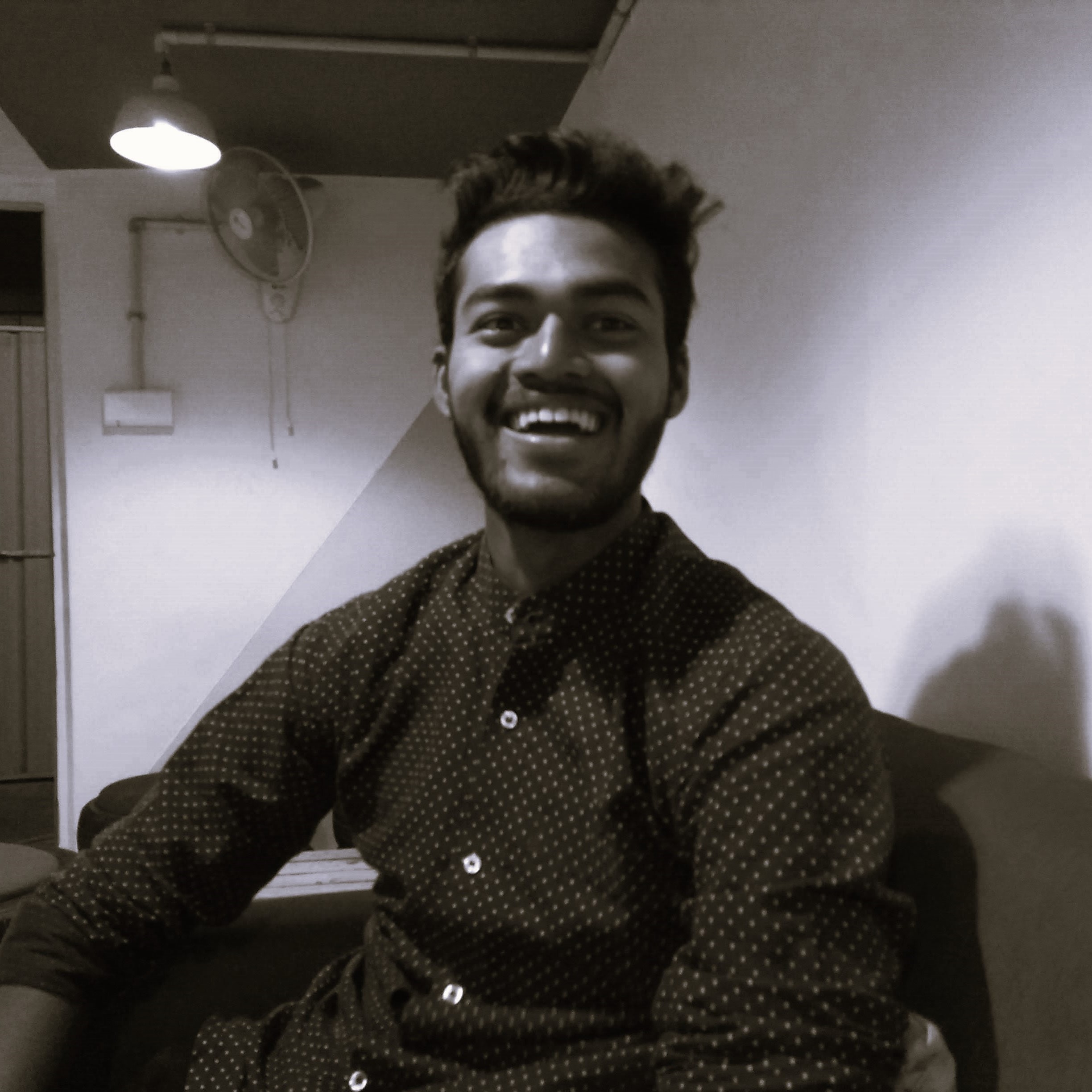
Contributor

